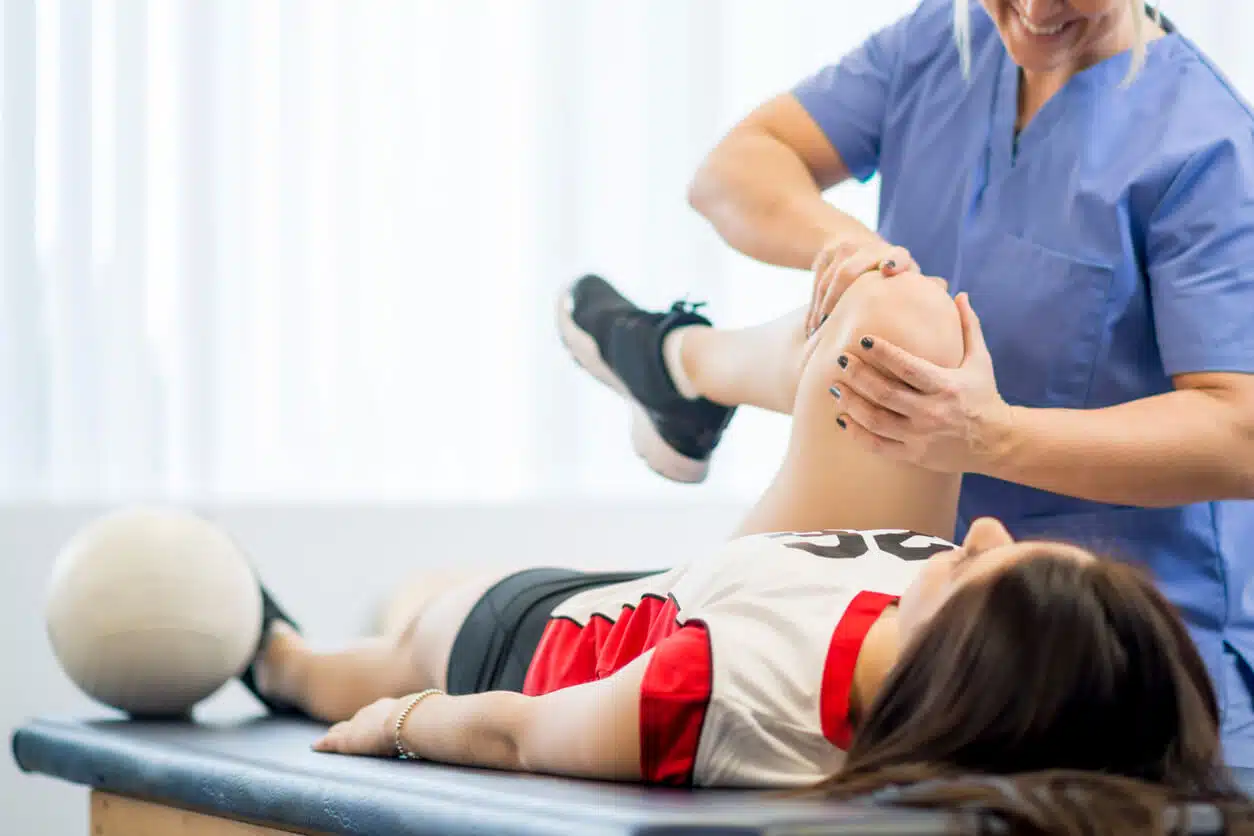
If you are an athlete or active individual, you are most likely acquainted with the nature of injury. It is one of the risks we take for the joy of physical activity, which is important for overall health. While surgery is sometimes necessary, many sports injuries can be treated effectively with non-surgical orthopedic sports medicine treatment methods.
For competitive athletes, preparing for surgery can take days, weeks, or months, and recovery from it can also take some time. Fortunately, with a combination of a thorough clinical assessment and non-surgical treatments, injured athletes and weekend warriors can often return to their lives quickly. Orthopedic sports medicine doctors can use many different non-surgical approaches to treat your injury.
What is a Sports Injury?
A sports injury is any injury that occurs during physical activity, exercise, or sports. These injuries often result from accidents, improper training techniques, or overuse. Sports injuries can affect athletes of all levels and require prompt treatment to ensure a fast return to activity.
Common Non-Surgical Treatments
Here are some of the most commonly used non-surgical treatment options for sports injuries:
1. Physical Therapy
Physical therapy involves exercises and techniques designed to improve strength, flexibility, and function. A physical therapist will create a personalized exercise plan that targets the injured area. This plan may include stretching, strengthening exercises, and activities to improve balance and coordination. Physical therapy helps restore normal movement and prevent future injuries.
Injuries treated with physical therapy include:
- Sprains and strains
- Tendonitis
- Ligament injuries
- Minor fractures
2. Rest, Ice, Compression, and Elevation (RICE)
RICE is a first-aid treatment method used to reduce swelling, pain, and inflammation.
- Rest: Avoid using the injured area to prevent strain and further damage to the tissue.
- Ice: Apply ice packs to reduce swelling and alleviate pain.
- Compression: Use elastic bandages to provide compression, improve blood flow, and reduce swelling.
- Elevation: Elevate the injured area above heart level to decrease swelling.
Injuries treated with RICE include:
- Acute injuries, such as ankle sprains
- Knee injuries
- Elbow and wrist injuries
3. Anti-Inflammatory Medications
Nonsteroidal anti-inflammatory drugs (NSAIDs) like ibuprofen and naproxen help reduce inflammation and relieve pain. These medications are taken orally or applied topically to the affected area. They work by reducing the production of substances in the body that cause inflammation and pain.
Injuries treated with NSAIDs include:
- Tendonitis
- Bursitis
- Minor fractures
- Muscle strains
4. Corticosteroid Injections
Corticosteroid injections deliver powerful anti-inflammatory medication directly to the site of injury. Orthopedic doctors inject the medication into the affected joint or tissue. The injections help reduce inflammation and pain quickly, providing relief that can last for several weeks or even months.
Injuries treated with corticosteroid injections include:
- Severe tendonitis
- Bursitis
- Joint pain from arthritis
- Chronic inflammatory conditions
5. Bracing and Supports
Braces, splints, and supports can stabilize an injured area. Braces and supports immobilize the injured area, allowing it to heal while preventing further damage. They provide support and can help reduce pain during movement.
Injuries treated with bracing and supports include:
- Ligament injuries (e.g., ACL tears)
- Sprains
- Fractures
- Tendon injuries
6. Ultrasound Therapy
Ultrasound therapy uses high-frequency sound waves to penetrate deep into the injured tissue. The sound waves generate heat and micro-vibrations, which reduce inflammation and pain while stimulating the repair of damaged tissue. A physical therapist applies a gel to the skin and uses a small device to send sound waves into the injured tissue. These waves increase blood flow and reduce inflammation, speeding up the healing process.
Injuries treated with ultrasound therapy include:
- Soft tissue injuries
- Muscle strains
- Tendonitis
Choosing the Right Orthopedic Sports Medicine Treatment
Non-surgical treatments offer effective ways to manage and heal sports injuries without the need for invasive procedures. The best treatment option depends on the type and severity of your injury.
Consulting with an orthopedic sports medicine doctor can help you determine the most effective non-surgical treatment plan for your specific condition. They will evaluate your injury and recommend a combination of treatments to ensure the best possible outcome.
Orthopedic Sports Medicine Near Me
If you’re dealing with a sports injury, consult the orthopedic sports medicine doctors at The Bone & Joint Center. We are experienced in treating a wide range of injuries, including those from sports or exercise.
In addition to sports injury treatment, we also provide patient education and injury prevention services. We are proud to offer Sportsmetrics™, a research-backed training regimen focused on helping athletes of all skill levels prevent injuries and improve athletic performance. The program is proven to be successful in reducing knee ligament injuries.
Our orthopedic sports medicine specialist near you can guide you toward the best treatment plan for your needs. To schedule a consultation, call our office today at (701) 946-7400/(866) 900-8650 or use our appointment request form.

